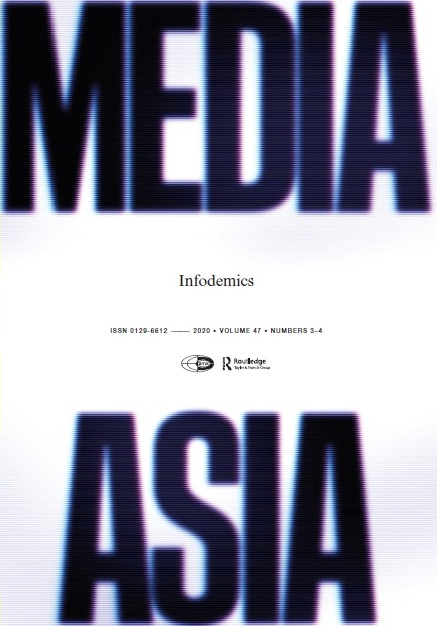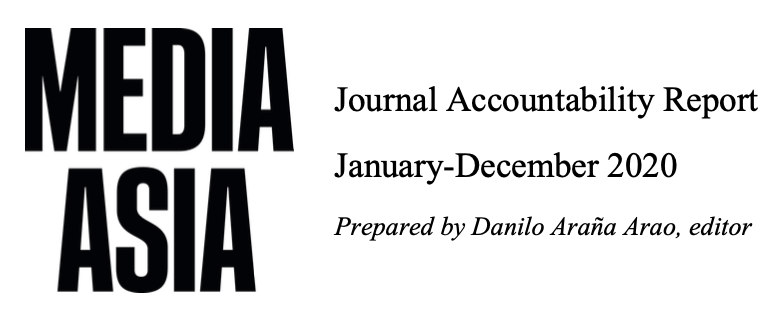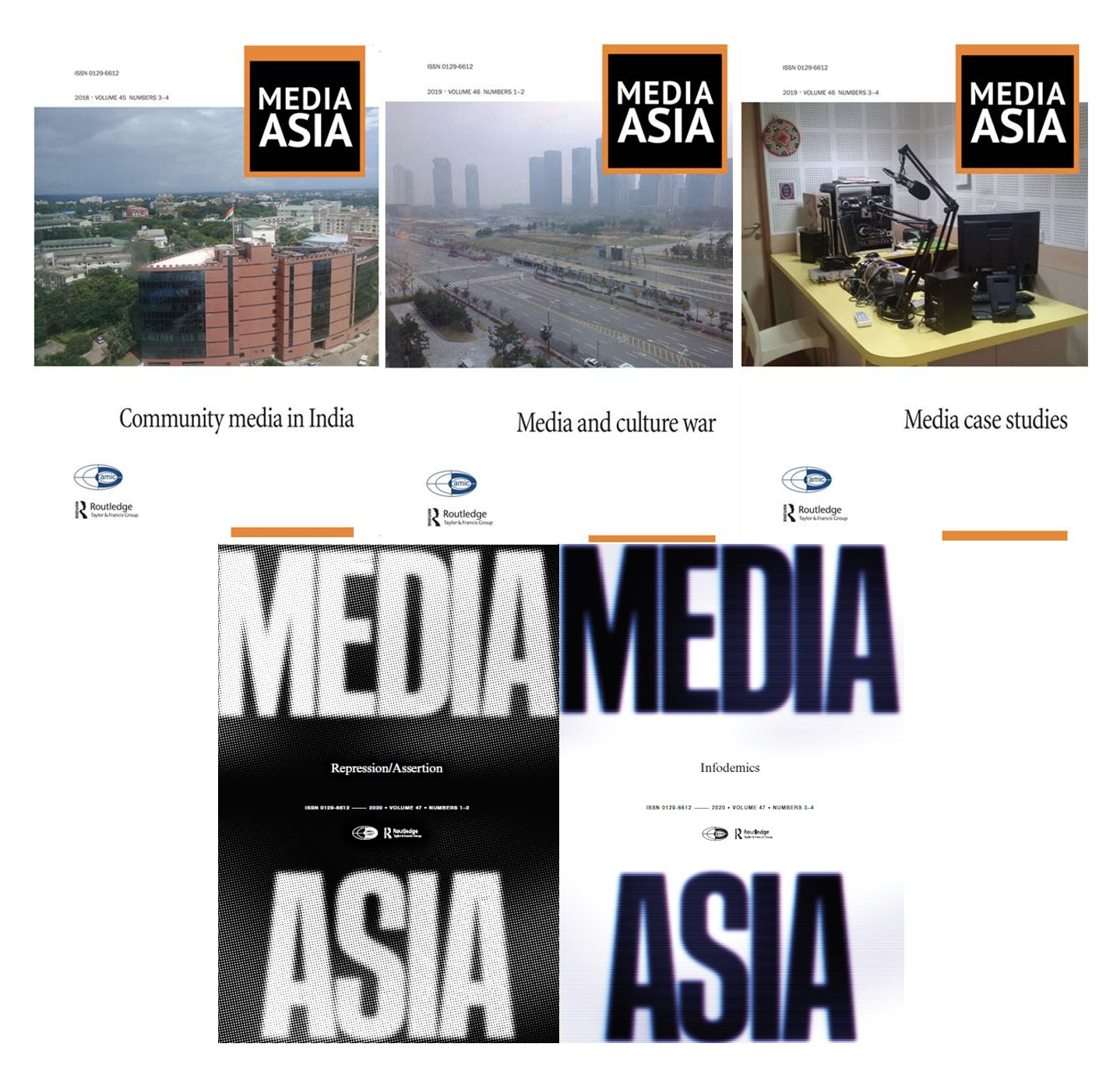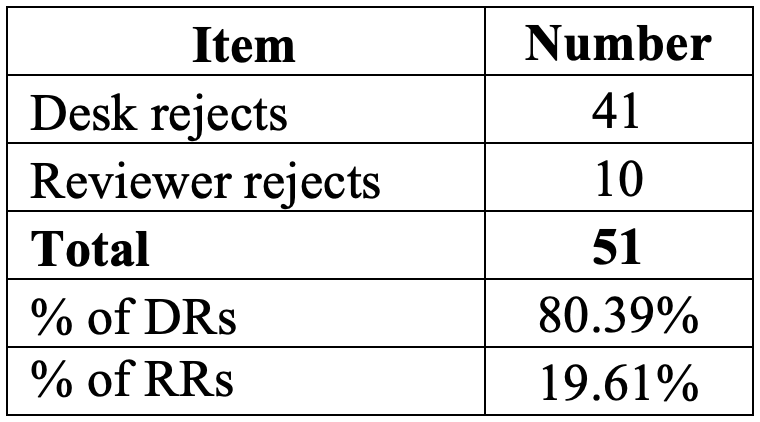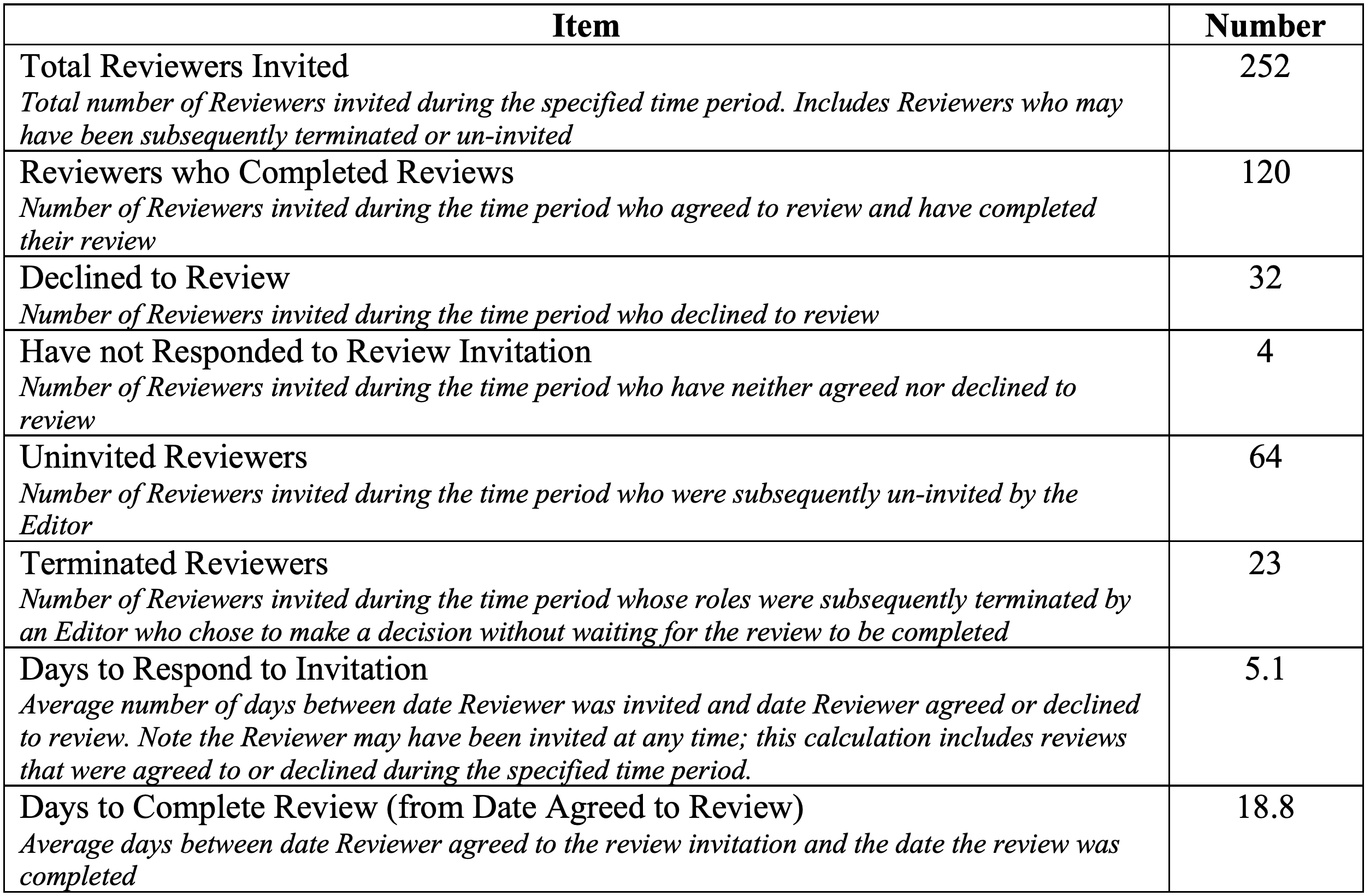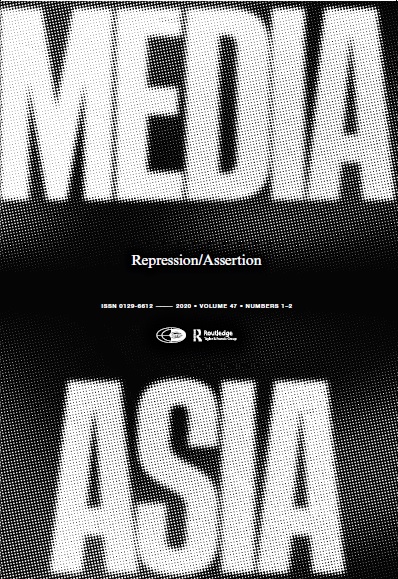
Articles published in Volume 48, Number 1 (March 2021) of Media Asia
Articles published in
Volume 48, Number 1 (March 2021) of Media Asia
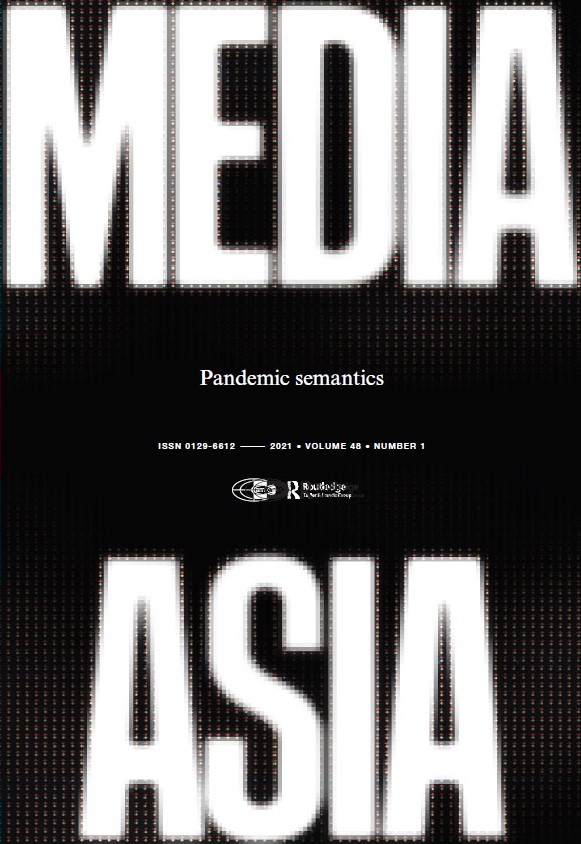
Editor’s Note: These are the articles included in Volume 48, Number 1 (March 2021) of our peer reviewed journal Media Asia. The information is provided to guide researchers in properly citing these articles.
Issue Title: Pandemic semantics
Editorial
Arao, D. A. (2021, March). Pandemic discourse. Media Asia, 48(1), 1-4.
https://doi.org/10.1080/01296612.2021.1881290
Articles
Raj, A., Anjali, R., & Goswami, M. P. (2021, March). Migrants, miseries, and media: measuring the
prominence of the miseries of migrants in the coverage of leading Indian English dailies during
COVID-19. Media Asia, 48(1), 5-20. https://doi.org/10.1080/01296612.2021.1881283
Gyamfi, P. A. (2021, March). Comparative analysis of CNN coverage of weather-related disasters in
USA, Japan, and India. Media Asia, 48(1), 21-33. https://doi.org/10.1080/01296612.2021.1881281
Watanabe, H. (2021, March). The discursive construction of the international dispute over the East
China Sea: A multimodal analysis of evaluations in online newspaper editorials in the Chinese and Japanese press. Media Asia, 48(1), 34-57. https://doi.org/10.1080/01296612.2021.1881282
Commentaries
Kanozia, R., Kaur, S., & Arya, R. (2021, March). Infodemic during the COVID-19 lockdown in India.
Media Asia, 48(1), 58-66. https://doi.org/10.1080/01296612.2021.1881286
Young, S. (2021, March). Internet, Facebook, competing political narratives, and political control in
Cambodia. Media Asia, 48(1), 67-76. https://doi.org/10.1080/01296612.2021.1881285
Reviews
Tandon, L. (2021, March). Defending the Web: Review of Reset by Ronald Deibert. Media Asia, 48(1),
77-79. https://doi.org/10.1080/01296612.2021.1881287
Shantharaju, S. (2021, March). The unrealized addiction: review of the book Irresistible by Adam Alter.
Media Asia, 48(1), 80-81. https://doi.org/10.1080/01296612.2020.1855826
Sanyal, D. (2021, March). Not so shining (film review of Dolly Kitty Aur Woh Chamatke Sitare).
Media Asia, 48(1), 82-84. https://doi.org/10.1080/01296612.2020.1857102

